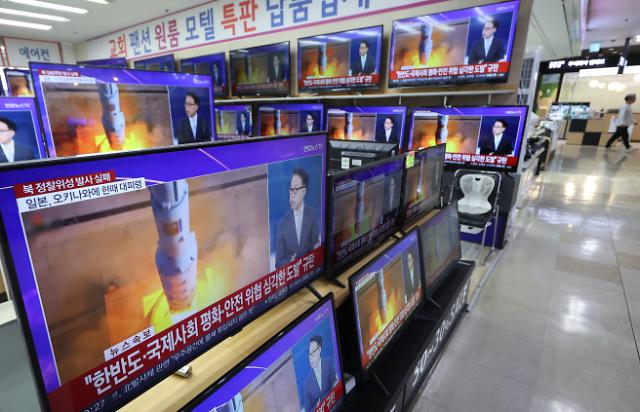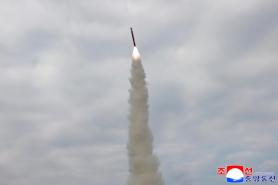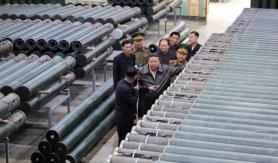
[Yonhap Photo]
A projectile was fired by North Korea at 6:27 a.m. (2127 GMT) on May 31 and it flew southwards from Dongchang-ri some 110 kilometers (68 miles) northwest of Pyongyang over Baekryeong Island, a South Korean island located near the Northern Limit Line. According to the defense ministry, the projectile went off the radar before it reached its projected landing area.
About 10 minutes after the rocket was fired, Seoul City sounded air raid sirens across the city and sent out an emergency text message notification that urged people to get ready to evacuate, without disclosing the source of the situation or where to evacuate to. Surprisingly, Seoulites carried on with their lives going to work and school, and did not pay much attention to the disturbing government message. The interior ministry sent out another emergency message 10 minutes later and said the previous alert was a false alarm.
According to Pyongyang's state news agency's report released on May 31, the new satellite-carrying rocket managed to separate the first-stage booster but the second-stage booster failed to ignite and crashed into the West Sea, also known as the Yellow Sea. Pyongyang predicted that the new components used in the rocket lacked in reliability and stability and the fuel that was used for propulsion was unstable.
The Korea Central News Agency (KCNA) said that related authorities will conduct investigations to find the cause of the failure and carry out various tests so that an additional rocket can be launched as soon as possible.
According to South Korea's Joint Chief of Staff, the defense ministry has identified the remains of Pyongyang's rocket 200 kilometers west of Eocheong Island some 190 kilometers southwest of Seoul, and is currently salvaging the crashed rocket.
Copyright ⓒ Aju Press All rights reserved.




